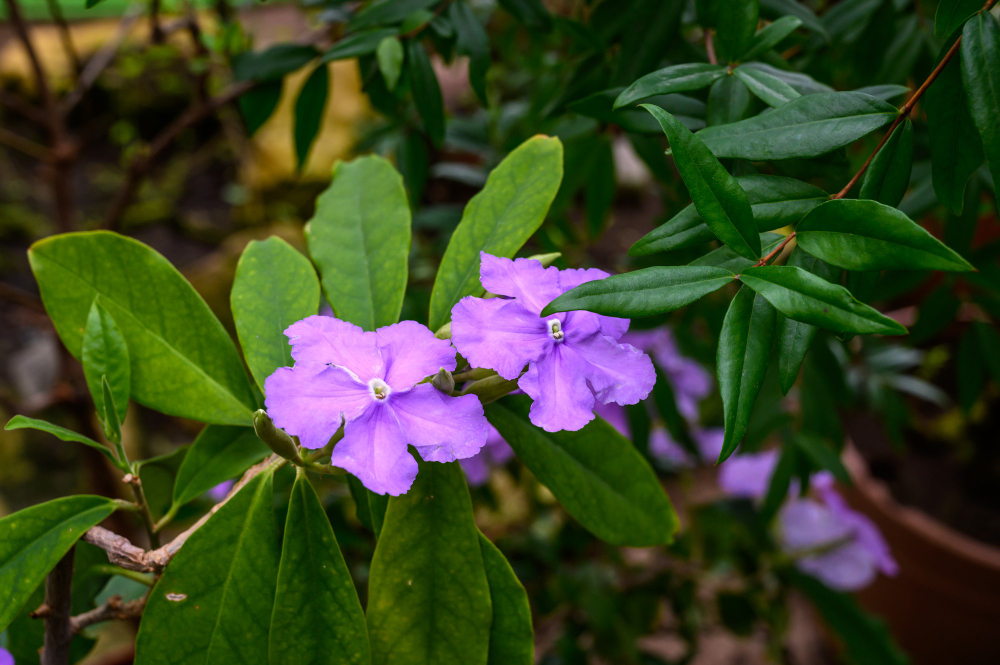Our pets are part of the family, and their safety is a top priority. While we often consider common household hazards like toxic foods and dangerous plants, the trees or plants in your yard might also pose a threat to your furry friends. Some tree species contain toxic compounds in their leaves, bark, seeds, or fruit that can be harmful if ingested. Certain trees thrive in Brisbane’s climate but can be dangerous for pets, particularly dogs and cats. If you want a pet friendly backyard, it’s essential to be aware of these risks and take steps to create a safe outdoor space.
Oleander
Oleander is a popular ornamental shrub due to its vibrant flowers, but it is extremely toxic to dogs and other animals. Every part of the oleander plant contains toxic cardiac glycosides, which can cause serious heart issues, vomiting, diarrhea, lethargy, and even death if ingested. Given its widespread use in gardens and parks, it’s important to be vigilant if you have pets. If you suspect your pet has consumed any part of an oleander plant, seek veterinary attention immediately. To ensure your yard is safe, consider removing oleander and replacing it with non toxic flowering plants such as hibiscus or grevillea.
Sago Palm
Sago palms are a common landscaping plant due to their hardy nature and tropical aesthetic, although they are one of the most dangerous plants for pets. Every part of the sago palm, particularly the seeds, contains cycasin, a toxin that can cause severe liver failure, vomiting, bloody diarrhea, seizures, and even death in dogs and cats. Unfortunately, pets are often drawn to chewing on these plants, making them an extremely high risk choice for backyards. So if you have pets, it’s best to remove any sago palms from your garden and replace them with non-toxic alternatives such as golden cane palms or native grass trees.
Black Bean Tree (Moreton Bay Chestnut)
The black bean tree (Castanospermum australe) also known as the Moreton Bay chestnut, is a native Australian tree commonly found locally. While it provides dense shade and attractive flowers, its large seeds (beans) are highly toxic to pets and ingestion can lead to vomiting, diarrhea, and severe neurological symptoms such as tremors and seizures. If you have a black bean tree in your yard, ensure that fallen seeds are regularly removed to reduce the risk of poisoning.

Brunfelsia (Yesterday, Today, and Tomorrow)
Commonly known as the “Yesterday, Today and Tomorrow” plant, is a popular ornamental shrub in many gardens due to its beautiful purple to white flowers and as it’s on this list you can be sure that it is toxic to dogs and cats. If you have pets, it’s best to remove Brunfelsia from your garden and replace it with safer alternatives like native bottlebrush or lilly pilly.
Camphor Laurel
Camphor laurel (Cinnamomum camphora) is an invasive tree species commonly found in Brisbane. Its leaves, seeds and even bark contain toxic compounds that can cause serious health issues in pets, while the strong camphor scent may attract curious animals, increasing the risk of ingestion. If you have a camphor laurel tree in your yard, consider professional removal to create a safer space for your pets.
Removing Toxic Trees for a Safer Yard
To ensure your backyard is safe for your pets, inspect the trees and plants in your garden to identify potential hazards. Many pet owners opt for native Brisbane trees such as the tuckeroo or lilly pilly, which are both safe and attractive choices for a backyard environment. Keeping an eye on your pets when they are outside, especially if they are prone to chewing on leaves or seeds, can also help prevent accidental poisoning.
If you suspect you have a toxic tree on your property, professional tree removal may be the best option to help you create a pet friendly environment without compromising the beauty of your outdoor space.
